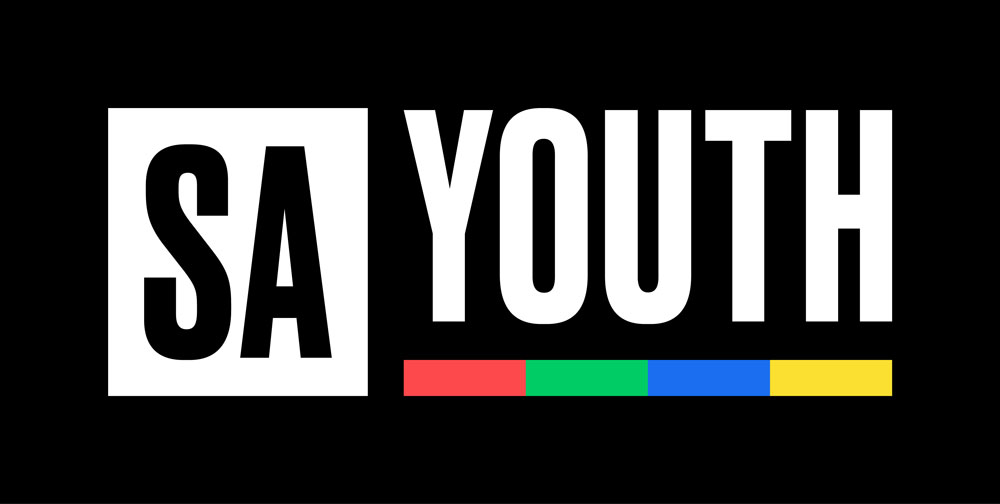

SA Youth connects young people to work and employers to a pool of entry level talent.
Are you a work-seeker?
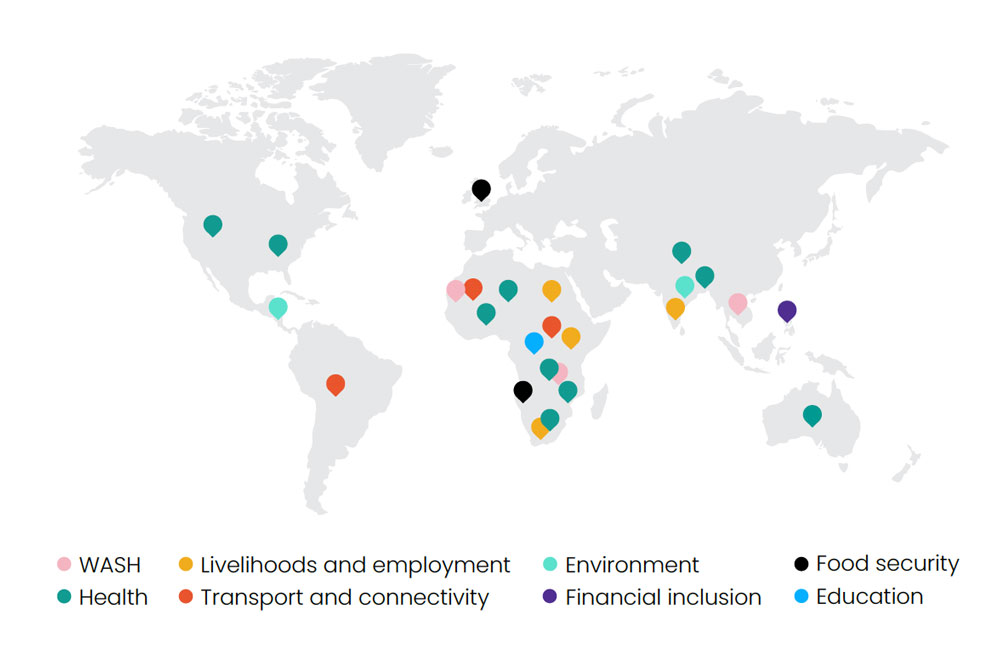
This report presents the key insights from the unique journeys of these organisations. We look at who is paying for non-profits to sustain solutions at scale, and examine the trade-offs and lessons specific to each payer type (philanthropy, governments, corporates, bilateral and multilateral institutions, end users).
We hope the lessons within this study offer ambitious non-profit leaders valuable insight to navigate the complex and dynamic funding landscape, and ultimately make more meaningful dents against society’s most pressing challenges.
We also recognise it is ultimately funders who hold the power to address problems at scale. To truly become allies, funders must bridge this power gap and use the findings of this study to rethink how to deploy funding in ways that drive meaningful, scalable impact.

Whilst non-profit leaders highlighted the importance of diversification of funding streams, philanthropy underpins the majority of these organisations’ funding models.
Many philanthropic funders expect their grantees to eventually find other major backers, but this study shows that non-profits normally require ongoing philanthropic support to sustain impact at scale.
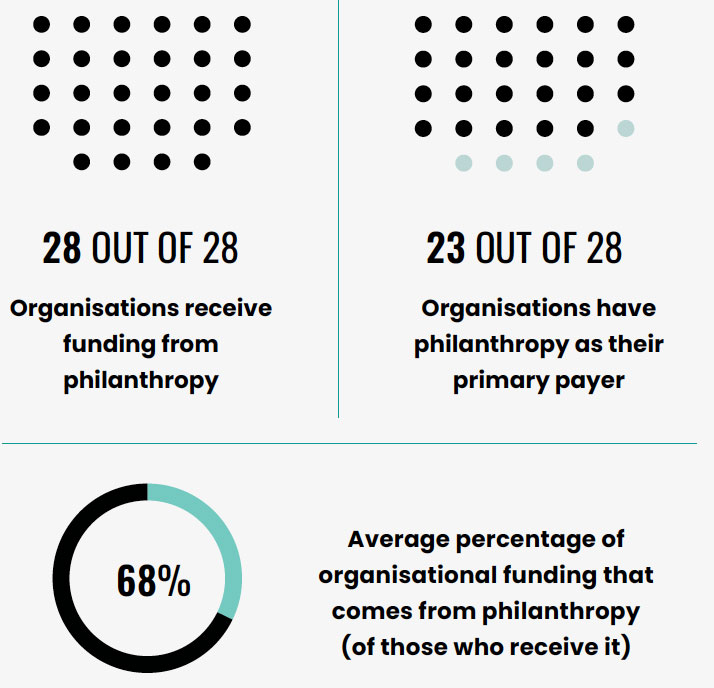
Some amount of unrestricted funding is a powerful catalyst for achieving impact at scale, offering organisations the flexibility to allocate resources where they are most needed, respond swiftly to changing circumstances, invest in testing innovative solutions, and cover core costs.
Whilst not all non-profits need a majority of unrestricted funding to achieve their goals, the absence of it can be very restraining and ultimately threaten a solution’s likelihood of achieving impact at scale. 1
We re-ran analysis excluding these 5 organisations and found the results hold: 16 of 23 (70%) have secured more than 50% unrestricted funding; Unrestricted funding makes up 66% of the 23 non-profits’ funding.


Governments are crucial stakeholders to enable scale. All 28 organisations in our study engage with government in some capacity.
Whilst some aim for governments to cover solution delivery costs, governments are rarely the full payer of sustaining a solution at scale. Further, non-profits usually provide critical, ongoing support to sustain the solution, but are rarely paid by governments for this.
Only 5 of the 12 organisations providing this support are compensated by the government, and most receive less than 15% of their annual funding from the state.
This insight is crucial for both non-profits and philanthropic funders. For the organisations in our study, philanthropy has played a crucial role in enabling them to provide the required ongoing role in ensuring the solution is sustained at scale.

Only 5 of the 12 organisations providing this support are compensated by the government, and most receive less than 15% of their annual funding from the state.
This insight is crucial for both non-profits and philanthropic funders. For the organisations in our study, philanthropy has played a crucial role in enabling them to provide the required ongoing role in ensuring the solution is sustained at scale.
In addition to working with government, non-profits seek to scale through other ‘doers’, such as other NGOs, CBOs, private sector actors, schools, to implement their solution at scale. Often, the ambition is to enable doers to implement the solution autonomously, and some non-profits aim to charge a fee in exchange for their support.

All the non-profits in our study scaling in this way have found that they have to play a significant ongoing role to sustain quality implementation.
Only 4 charge a fee, which provides only a very small amount of their total income.
This insight is crucial for both non-profits and philanthropic funders. For the organisations in our study, philanthropy has played a crucial role in enabling them to provide the required ongoing role in ensuring the solution is sustained at scale.

These findings underscore the difficulty of securing funding for scale. Other doers, especially governments, require ongoing support to implement a solution, yet will rarely pay for this. Philanthropy remains the most significant funding source at scale, yet philanthropic funders usually want to find exit strategies for their grantees.
Despite the challenges, these 28 non-profits have successfully raised funding to transform lives at scale. Having walked the journey, they offer clear lessons and guidance to other non-profit leaders on their mission to create impact at scale:
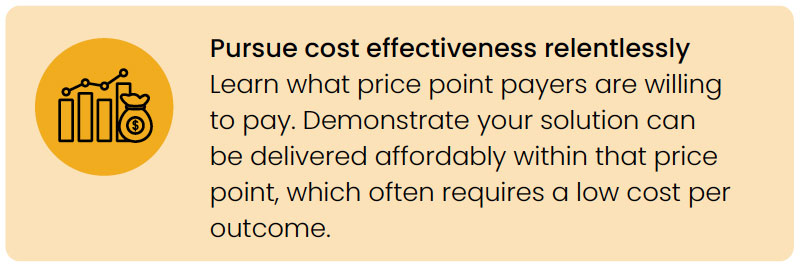
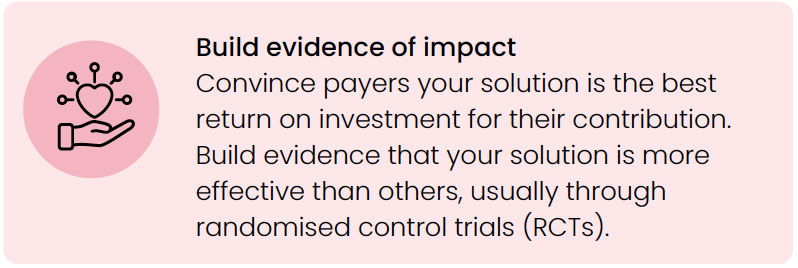
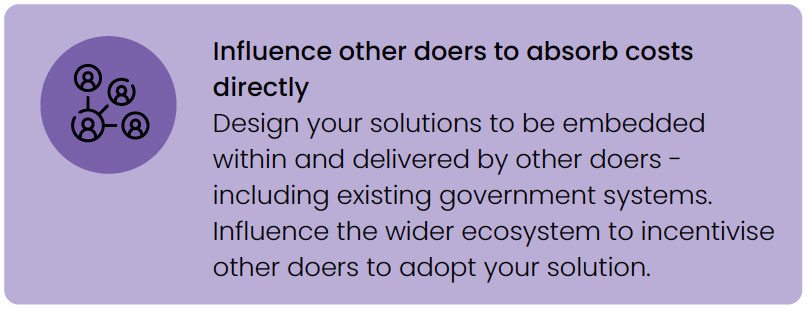

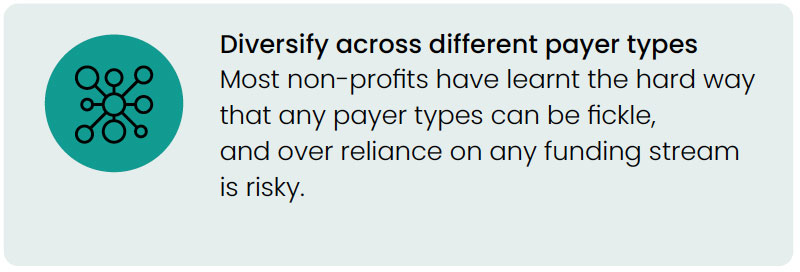
customer@harambee.co.za
0800 72 72 72
Mon-Fri 9am-4:30pm